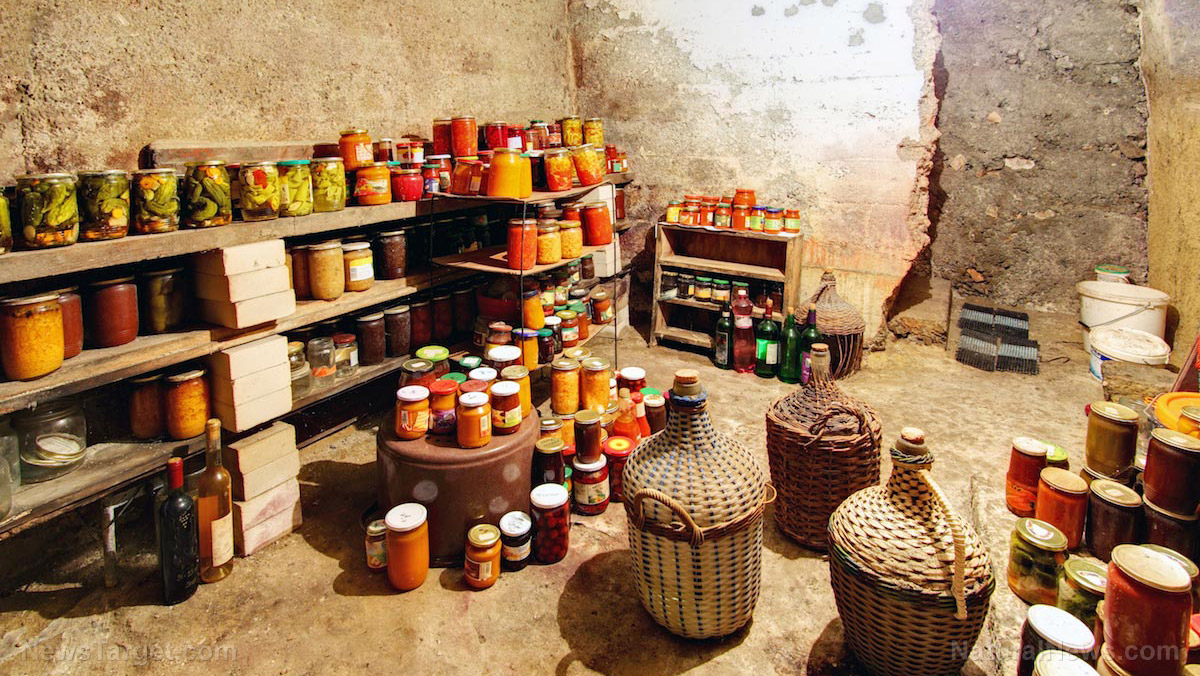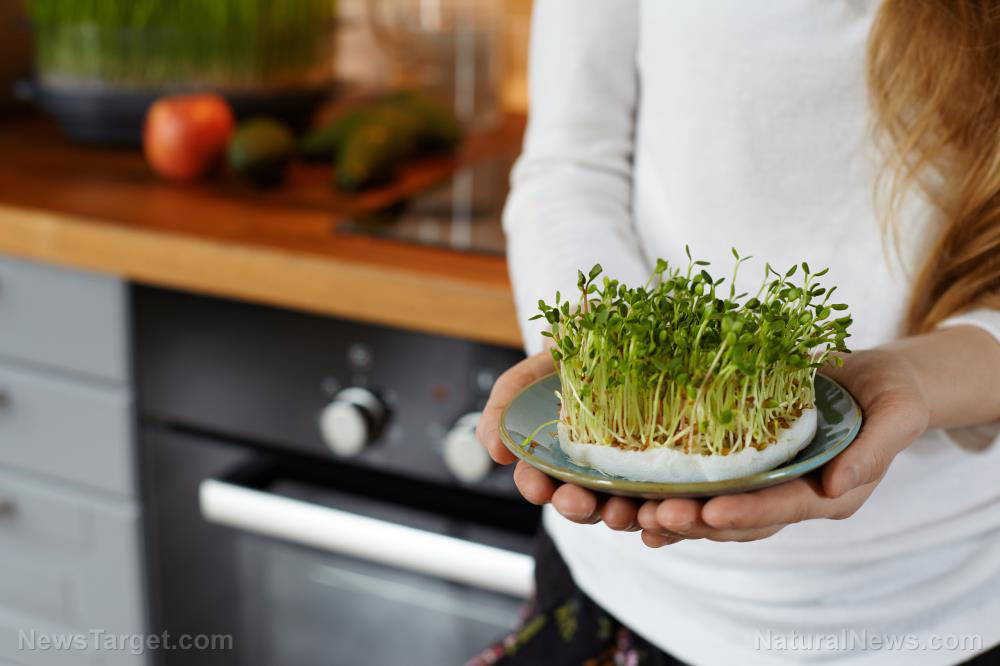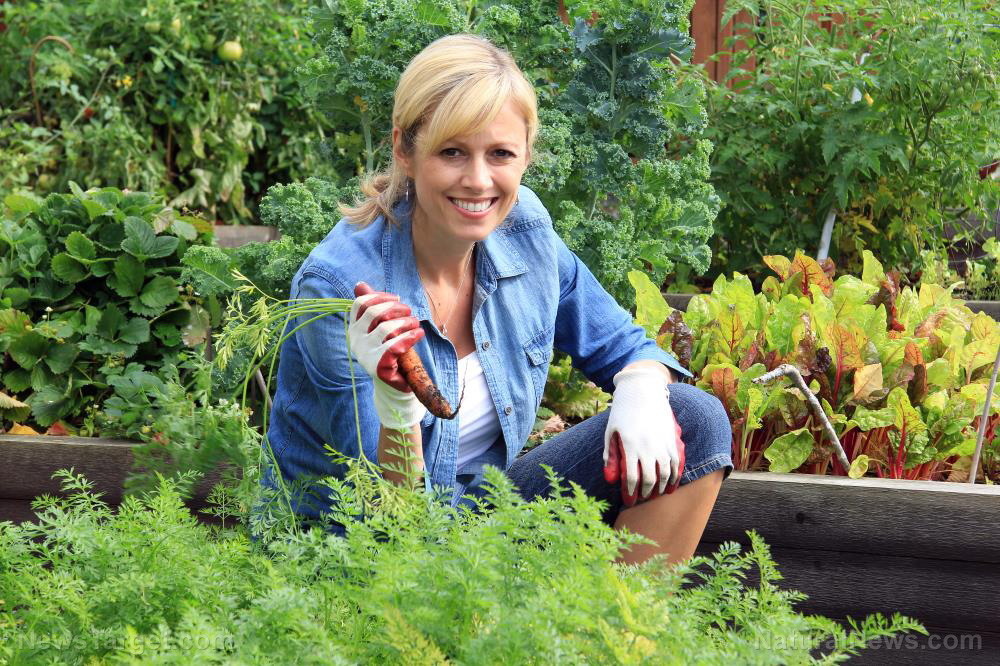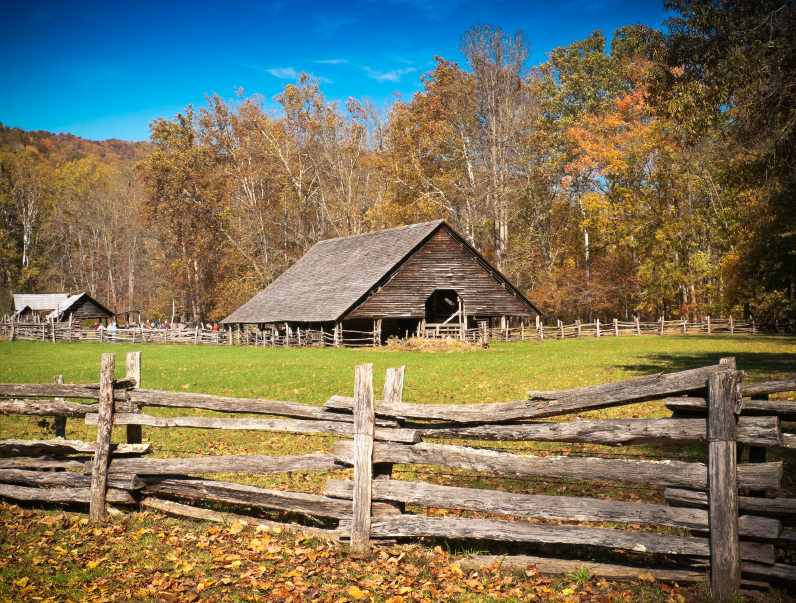Storing food without a refrigerator: 25 different kinds of root cellars
07/22/2018 / By Zoey Sky

If the power suddenly goes off for more than a couple of days in your area, can you survive on the food that you have right now? With a root cellar, food storage without a refrigerator will be one less thing to worry about. (h/t to BioPrepper.com)
If you have the means to do so, consider setting up a root cellar. There are various options in the list below so you can meet any of the specific needs you might have such as available space. A root cellar is a must if you ever want to go off grid, but it’s also a good way to add some food storage if you feel like holding on to your fridge. (Related: 10 ways to prep when you’re completely broke.)
Low-cost root cellar options
- DIY root cellars – These low-cost options can teach you how to make a root cellar out of a five-gallon bucket, plastic drums, wooden pallets, and galvanized trash cans. These options are ideal for prepping beginners because they don’t require carpentry skills.
- Backyard root cellars – You have two options: one that involves using a pail, digging a hole, and putting it in the ground then covering the hole with a bale of straw or a piece of wood. The last step is to place a rock on top of the cover to secure it. The second option involves burying an old freezer in the ground.
- Simple root cellar – Another simple idea, this involves digging a hole in the ground. Just build a wooden hinged door to cover the hole.
- Mini root cellar – All you need to do is build a small wooden box that needs to be buried in your yard.
- Hobbit hole root cellar – This option requires the digging of a hole in the ground so you can place the food inside it. This also needs a wooden door over the hole, which must be covered in mulch and insulated with other organic matter.
- Multi-purpose root cellar – Doubles as an above-ground storm shelter, this option recycles materials to create a root cellar. It’s also sealed to keep out creepy crawlies.
- Earthbags root cellar – Uses walls made out of earthbags instead of cinder block. You can buy your own earthbags or you can make sandbags.
- Earthbag dome – Another option made out of earthbags, this requires you to build a structure out of sandbags stacked like bricks.
- Organic garden blanket – A unique option, this requires the use of the organic garden blankets which are filled with organic matter and placed over root vegetables. This lets you harvest the vegetables all year long.
Mid-and high-cost options
- DIY in-ground root cellar – “A beautiful, traditional in-ground root cellar,” this option can also protect you from storms since it’s in the ground.
- Robert’s root cellar – This requires some handiwork, so think twice before you decide on this root cellar.
- Low-cost earthbag building – A “multi-purpose building,” this option can be used as “a root cellar, storm shelter, or a storage building.”
- Green roof root cellar – Made out of cordwood, this root cellar has a modular green roof. Because it’s backed into the earth, you can keep vegetables cool the whole year.
- Common ground root cellars – Comes in two options: a traditional root cellar built with cinder blocks and a barrel filled with straw which is placed underground to store your vegetables in.
- Amy’s dream root cellar – A beautiful option, this root cellar has a rustic feel suitable for a farm or homestead.
- 7-step root cellar – True to its name, this option only requires seven steps. It’s built in the ground using cinder block walls. This root cellar has a dome type roof.
- Rustic root cellar – This option comes with a lovely wooden door and stone front.
- Modern root cellar – This option comes with the works like a sliding glass door and a spiral staircase.
- “Thinking outside of the box” root cellar – Comes with the option to use the body of the root cellar in several ways.
- A-frame root cellar – This option uses straw for insulation, and it’s a more permanent structure.
- School bus root cellar – This literally requires a school bus, so plan accordingly.
- Boat root cellar – Should you have an old boat that you would like to repurpose, go with this option.
- Deck root cellar – A convenient option, this root cellar is a must if you own a deck. You can even insulate it to store food in winter.
- Shipping container root cellar – Another option that can be used a storm shelter. You just need to dig a hole into a hill big enough for a large shipping container.
- Ground fridge root cellar – This option requires the purchase of a Ground Fridge. It keeps your food cool and is basically an easy insert.
Sponsored solution from the Health Ranger Store: Lab-verified Nascent Iodine solution is a dietary supplement that provides your body with supplemental iodine to help protect your thyroid during radiation exposure. Nuclear accidents such as Fukushima (or nuclear war) can expose your body to radioactive iodine-131, a dangerous radioisotope. Pre-loading your system with stable iodine occupies the iodine receptor sites on your organs, causing your body to naturally expel radioactive iodine you may have been exposed to through air, food, water or milk products. This defensive strategy is recommended by nearly all health authorities, worldwide, including the Nuclear Regulatory Commission. Discover more at this link.
So if you are looking for a more simple option for a root cellar then you might consider purchasing one of these. To learn more DIY appliances, visit Homesteading.news.
Sources include:
Tagged Under: DIY, Food storage, homesteading, how to, off grid, preparedness, prepper, prepping, root cellars, self-help, self-sufficient, Storage, survival, survivalist, sustainable living




















